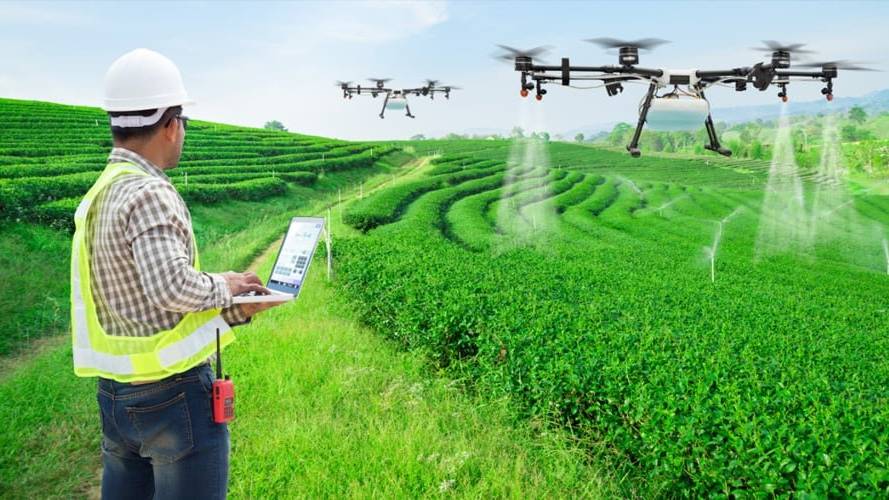Our Future
PRECISION AGRICULTURE
This advancement in agricultural technology uses big data to support management choices, allowing farmers to regulate crop yield variables like moisture content, soil quality, and micro-climates to maximize output. This enhances crop health and optimizes agricultural resources, which increases productivity.
DRONES & SATELLITES
Drones and satellites can find signs of disease in crops, identify pest species and deter crop theft. A drone flights' acute angles make it possible to create interactive 3D maps and models. Satellites can cover far larger areas and are not affected by weather. Combining drones and satellites in agriculture provides more ease of management and monitoring.

INDOOR VERTICAL FARMING
The lack of land in Sri Lanka causes many challenges in increasing agriculture output. Indoor & outdoor vertical farming can go a long way in alleviating space requirements. Farm products can be grown indoors in a closed, controlled environment using vertically mounted growing shelves. Such technology can increase crop yields even in small spaces in addition to allowing hydroponic, aquaponic or aeroponic growth mediums instead of soil.T
LASER SCARECROWS (Mostly used with corn)
Crops grown in open fields are often endangered by birds or and other small animals. The traditional use of scarecrows is no longer a viable method of protection from this problem. Laser Scarecrows are high-tech devices with motion sensors that are far more effective in controlling this problem.
FARM MANAGEMENT SOFTWARE
Farm management software is an integrated platform that helps farmers keep track of their daily tasks by giving them real-time data and information, like a digital checklist. With this monitoring and reporting software, farmers can improve decision-making throughout all operations.
WATER MANAGEMENT TECHNOLOGY
Innovation and technology in agriculture offer farmers more sustainable ways to provide sufficient water to plants. Sprinklers, drip systems, water loss prevention are some systems that are included in water management. These technologies reduce water usage drastically allowing water restrictive lands to be better utilized for agriculture.

BLOCKCHAIN
In the current food system, blockchain's ability to track ownership records and resist tampering can solve problems like food fraud, safety recalls, inefficient supply chains, and food traceability.
ARTIFICIAL INTELLIGENCE
AI can provide farmers access to cutting-edge technology (like remote sensing) that can provide them with information more detailed than what their eyes alone can see. It is quicker and more accurate than simply looking while driving or walking through the fields. This also reduces space requirement to monitor crops physically.
